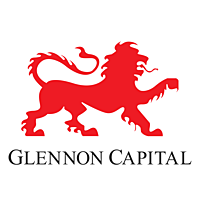7 Things To Look For On A Balance Sheet

ASX:GC1, ASX:CMI
While the profit and loss statement is doubtless very important for investors, the balance sheet should not be underestimated; it may even be more important. Below we run through the top points to consider when coming face-to-face with a balance sheet.
1) Balance Sheet Structure
Firstly we will need to describe the structure of the balance sheet. There are usually five distinct categories: current assets, non-current assets, current liabilities, non-current liabilities and equity. Current just denotes the assets expected to be converted to cash or liabilities expected to be paid out in the next 12 months. Are current liabilities greater than current assets? There may be a short term problem arising. Equity is what is left over when total assets are reduced by total liabilities. Is equity negative? Possible, but it may also spell issues down the track. Now that we have dealt with the basic structure we can get on with the interesting details.
2) Cash (and cash equivalents)
Cash and cash equivalents is usually the first of the asset lines. This is a critical one, but is more meaningful when taking into account debt, often termed interest bearing loans, borrowings, or something similar, on the liability side of the balance sheet. Taking the debt and subtracting the cash will give you a net debt position for the business.
With too much debt the business may struggle to repay interest or may have to restructure operations, while holding too much cash may open up opportunities to spend more on useful capital expenditure or return cash to shareholders. The company’s total value, termed enterprise value and often compared to earnings before interest and taxation, will be the combination of net debt owed and the market capitalisation of the equity.
3) Receivables and Inventories
Continuing to make our way down the balance sheet we see two other items worth focussing on: receivables and inventories. Receivables, unsurprisingly, is money still to be received from clients for products already sold, while inventories are products that sit unsold. Some companies suffer with being paid late by large customers or having to keep plenty of inventory on hand. Both of these represent a drain to cash: money still to be received is money not yet sitting as cash or deployed to more productive uses. A current liability, payables, offsets these lines somewhat; the more payables, as the name suggests, the more cash the business still has to pay. Meanwhile cash received in advance of providing a service is captured in a line termed deferred revenue.
Working capital, these items taken collectively, often grows when a business is growing, meaning most growing businesses will see cashflow growing slower than revenue growth. Is a business slow at getting paid and carrying persistently high levels of receivables? Maybe it faces customers that are too big and have too much market power. High and growing levels of inventories might indicate some trouble in selling old products. Changes over time will paint a more complete picture.
4) Long Term Assets
Further down the balance sheet longer term assets like property, plant and equipment will often be seen. Any land, buildings, factories or machines are represented here. The more of these assets a business acquires over time from capital expenditure, seen in the cashflow statement, the larger this line gets. The more depreciation reduces the value of these assets over time, seen in the profit and loss statement, the smaller this item gets. Some businesses will be asset heavy, needing plenty of property, plant and equipment, while others will be asset light, needing very little.
5) Intangible Assets
Sometimes non-physical intangible assets are also present. These can include patents, capitalised product spend, or software. It can also include goodwill, which will include the amounts paid to acquire businesses over and above the value of the other assets. Too much goodwill and other intangible assets, when combined with not enough earnings from the business may lead to write downs: an admission that cash previously spent has been wasted.
6) Liabilites
There may be a grab bag of liabilities on the balance sheet also, including provisions for employee benefits or making good on rented office space. Maybe some tax needs to be paid.
7) Equity
All this brings us down to the equity side of the balance sheet. The two biggest items to watch out for here are contributed equity, the amount of money raised from investors, and retained earnings, the earnings retained by the company after paying out dividends. Negative retained earnings implies the company has been losing money historically, and while that may not be the case in future, plenty of scepticism needs to be applied.
As always notes, the numbers sitting alongside the items on the balance sheet, are your friends. One page will not be enough to spell out in detail the goings on of the balance sheet, and companies will use the notes to spell out in detail an individual line.
The balance sheet, while often not emphasised, has its own story to tell about the health of a business and its future. It pays for investors to listen.
7 things to look for in a cash-flow statement
5 topics

Glennon Capital was founded in 2008 by Michael Glennon. Previously, Michael worked with some of the best institutional small company fund managers in Australia. In 2007, he received the IMCA Money Management Fund Manager of the Year (Small Cap)...
Expertise
No areas of expertise

Glennon Capital was founded in 2008 by Michael Glennon. Previously, Michael worked with some of the best institutional small company fund managers in Australia. In 2007, he received the IMCA Money Management Fund Manager of the Year (Small Cap)...
Expertise
No areas of expertise
